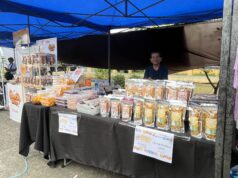CITY OF SAN FERNANDO — Amid reports that rice products in the US were found with arsenic, the Central Luzon-based Philippine Rice Research Institute (PhilRice) has assured consumers that Philippine rice remains free of the element which can lead to cancer.
“Unlike some 60 rice and rice products in the United States that the Food and Drug Administration reported to contain cancer-causing arsenic, locally grown rice varieties are safe from it,” said PhilRice chemist Joy Bartolome Duldulao.
Arsenic is a naturally occurring metal in the soil in very negligible amounts but rises to high levels due to environmental pollutants such as arsenic-containing fertilizers that seep through water and soil.
In his recent study, Duldulao found rice sampled all over the country to have safe levels of arsenic. These samples included 18 milled rices of commonly grown varieties, with one from a commercial outlet, and seven brown rices.
The samples were analyzed using an “inductively coupled plasma-optical emission spectrometer (ICP-OES), and their arsenic levels were below the ICP-OES detection limit of 15 parts per billion (ppb),” Duldulao’s study said.
The Philippines has not yet set a maximum limit of arsenic in rice, he said, noting that other countries have official limits. Australia and New Zealand have 1000 ppb total arsenic limit for cereals and China has 150 ppb inorganic arsenic for rice and rice products.
He noted that the global “normal” range for arsenic concentration in rice is 80-200 ppb.
Duldulao quoted a study by Yamily Zavala and John Duxbury at Cornell University in NewYork , revealing that arsenic concentrations in rice from the US and Europe were similar a 198 ppb, and significantly higher than rice from Asia at 70 ppb.
“The Cornell study showed that arsenic-contaminated irrigation water, not soil, led to increased grain arsenic concentration. As rice is grown in flooded soils, it absorbs and stores a lot more arsenic compared to other plants through its roots,” he noted.
While Philippine-produced rice is safe from arsenic, Duldulao clarified that there is no data yet on whether all imported rice have been tested for their arsenic content.
“Arsenic content of rice may vary across locations and not varieties, he said, as he advised consumers to just eat the “right amount of rice” as a measure against possible arsenic intake from the cereal.
Duldulao also urged Filipinos to try “other carbohydrate sources,” as he noted that “the elevated level of arsenic in rice as compared to other starchy foods is associated with its being grown in flooded soil conditions.”
He said alternative staples do not grow in flooded soils and that “a diversified diet also helps guarantee that daily nutritional requirements of the body are met.”




